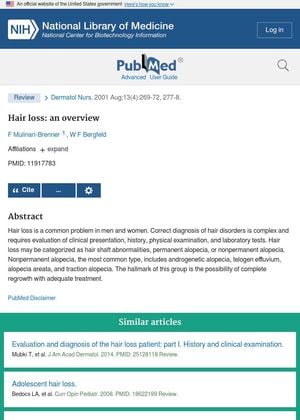Hair Loss: An Overview
August 2001
in “
PubMed
”

TLDR Hair loss can often be reversed with the right treatment.
The 2001 review titled "Hair loss: an overview" discussed the complexity of diagnosing hair disorders, which requires evaluation of clinical presentation, history, physical examination, and laboratory tests. Hair loss was categorized into hair shaft abnormalities, permanent alopecia, and nonpermanent alopecia. The most common type was nonpermanent alopecia, which includes androgenetic alopecia, telogen effluvium, alopecia areata, and traction alopecia. The key feature of this group is the potential for complete regrowth with appropriate treatment.




